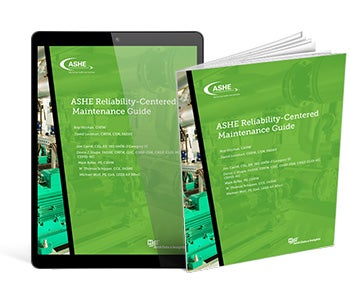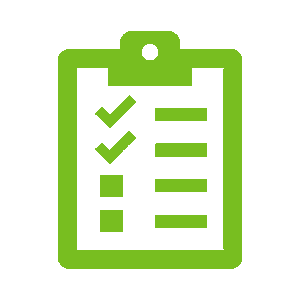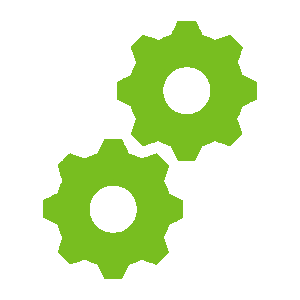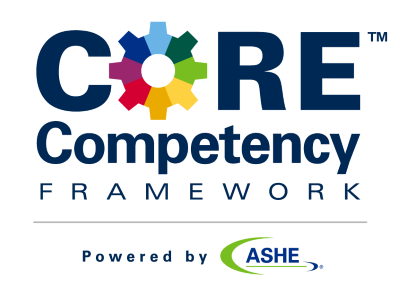RCM Journey for Health Care Facilities
Paving the road to reliability-centered maintenance
Health care facilities today are extremely complex, with buildings and equipment that must operate efficiently and safely around the clock. Limited resources and changes in the regulatory environment mean that health care facilities teams face growing challenges in maintaining these systems and equipment. Reliability-centered maintenance can help.
This page offers resources to aid facilities teams with the implementation of reliability-centered maintenance (RCM) in their organizations, no matter where they are on their RCM Journey.
What is reliability-centered maintenance?
Reliability-centered maintenance (RCM) is a maintenance strategy that analyzes each structure, system and asset in a facility, defines its true design functions and determines its risk and criticality to facility operations.
RCM has been a standard maintenance practice for more than three decades in an array of fields including manufacturing, the military and the aviation industry. It has been used effectively in health care since the 1990s.
RCM is an ideal maintenance strategy to use when continuous, highly precise performance is critical to operational success, such as in hospitals and other health care facilities. RCM is a core strategy utilized in a Health Care Asset Management program.
Why take the RCM Journey?
ASHE member Mark Mochel explains the benefits of RCM and why, for many health care organizations, the initial investment is worth it.
Your field guide for this trip

The ASHE Reliability-Centered Maintenance Guide is a detailed resource for health care facilities managers starting down the path of RCM implementation. It reviews the basics of RCM and outlines the steps involved in planning and launching a successful RCM program in a health care facility. This guide works hand in hand with the RCM Journey to provide the knowledge and tools needed to navigate through that process.
Milestones to RCM
Navigate directly to the milestones below to access free resources to start or continue your RCM Journey.

Milestone 1: Planning
Setting the course for your journey
The first steps of introducing reliability-centered maintenance are securing buy-in from executive leadership, building a team and conducting a risk assessment of a health care facility's assets. These tools can help the RCM implementation team win the support of an organization’s leaders and staff, as well as lay the foundation to begin preparation work.
Targeted Tools and Resources:
HCAM Strategic Plan Outline
How do we create a vision for RCM? This sample strategic plan offers a framework for approaching strategic health care asset management — the foundation for implementing RCM in a health care facility.
RCM Value Proposition Letter
How can we justify RCM to leadership? Adopting RCM requires support from your health care organization’s executive leadership. Use this sample letter to craft your initial proposal to earn their buy-in.
Executive Leadership Pledge Letter
How do we gain the support of key stakeholders? Share this form letter with your health care organization’s internal communications team to spread the word about your RCM effort and demonstrate leadership support.
ASHE Risk Assessment Inventory
How do we evaluate facilities assets according to risk? This interactive tool helps users catalog a facility’s medical and building equipment — an essential step both to implementing RCM and achieving compliance with NFPA 99.

Milestone 2: Preparing
Assembling your gear
An effective RCM program requires a coordinated team to collect and analyze data on a facility's structures, systems and assets. These resources help the RCM implementation team get organized to effectively gather that data and decide where to focus their initial implementation efforts.
Targeted Tools and Resources:
The Role of the RCM Facilitator
Who should lead the RCM Journey? This resource outlines the responsibilities and qualifications an RCM facilitator should hold to create a culture of reliability across hospital departments and prepare the facility to implement RCM.
Pareto Chart Template
How do we prioritize initial RCM projects? Based on the Pareto (or “80/20”) Principle, this tool helps teams identify the systems and assets that would make the best candidates for RCM implementation.
Sample Key Performance Indicators
How do we set performance goals related to RCM? How can you show that RCM is making a difference in your facility? Use this inventory of key performance indicators to choose metrics that demonstrate meaningful progress.
CMMS Work Type Definitions
How do we classify maintenance work? Work types are a key piece of information included for each asset in the computerized maintenance management system (CMMS). This chart gives a simple overview of the various maintenance strategies in an RCM program.
ASHE Facility Management Data System Standard Nomenclature Guide
How do we standardize data in our systems? Use this reference guide to standardize asset and system nomenclature in the CMMS and begin capturing key data on your facility’s equipment.

Milestone 3: Implementing
Starting down the path
With the proper systems in place and personnel trained, the formal application of the RCM seven-step process can begin. These tools help RCM team leaders select a system or asset to pilot RCM, outline the fundamental RCM process and report initial findings to the team and hospital executive leadership.
Targeted Tools and Resources:
Best Practices for CMMS Configuration
How do we set up our systems for RCM? Your CMMS is the most important tool for organizing all the data needed to sustain an RCM program. Maximize your CMMS’s value for RCM by following these best practices.
Choose a Pilot Asset
Where do we begin? Conducting an RCM analysis is no small task, so the first system or asset to be analyzed needs to count. This resource explains how to choose a pilot asset to deliver results.
The Seven Steps to RCM
How do we set RCM in motion? This guide walks through the seven steps of a traditional RCM analysis, which reveals how to ensure the reliable performance of a structure, system or asset.
Team Communication Guide
How do we keep stakeholders informed? Use this guide to keep the RCM implementation team and key stakeholders informed of important updates and the progress of your facility’s RCM rollout.

Milestone 4: Measuring and Monitoring
Tracking and sharing your progress
After the initial implementation is complete, it is crucial to monitor the RCM program’s progress and communicate successes and setbacks with stakeholders and leadership. With appropriate documentation, RCM team leaders can underscore the value of the team’s work, demonstrate return on investment and maintain the program for continuous improvement.
Targeted Tools and Resources:
KPI Dashboard Template
How do we monitor improvement? Use this dashboard template to provide your team with a real-time snapshot of your RCM key performance indicators and help benchmark improvements.
Thank you to our RCM volunteers
ASHE’s Reliability-Centered Maintenance Committee is comprised of ASHE Professional Active Members and Associate Members with robust experience in reliability-centered asset management. These volunteers have contributed significantly to the creation of these resources and to championing RCM strategies in health care.
If you are interested in joining a committee or volunteering, visit MyASHE to connect.
-
David Lockhart, CHFM, CEM, CRL, FASHE
Committee ChairJoshua Brackett, PE, CHFM, FASHE
Craig Cummings, CHFM, CHSP
David Dagenais, CHSP, FASHE
Cody Hansen
Roy Hirchak, CHFM, SASHE
Devin Hugie, CHFM, CHC, FASHE
Johnathan Johnson
Rick Joslin, IRCC RML 1
Mark Keller, PE, CHFM, SASHE
Kevin Mannle, CHFM
Anthony Moiso, CHFM, CEM
Michael Roberts, PE, CHFM, SASHE, SrHE
Mike Rubendall, CHFM
Thomas Schipper, CCE, FASHE
Chris Van Gels
Allan Watkins, CHFM
Michael Wolf, PE, CxA, LEED AP BD+C
Josh Zacharias, CHFM
Chad Beebe, AIA, CHFM, CFPS, CBO, FASHE
ASHE Staff Liaison
Enhance your Maintenance & Operations Competency
Reliability-centered maintenance can be part of your organization’s maintenance and operations strategy. Ready to expand your health care maintenance and operations skills even further? Find more training and resources through the ASHE Core Competency Framework.
Maintenance & Operations


